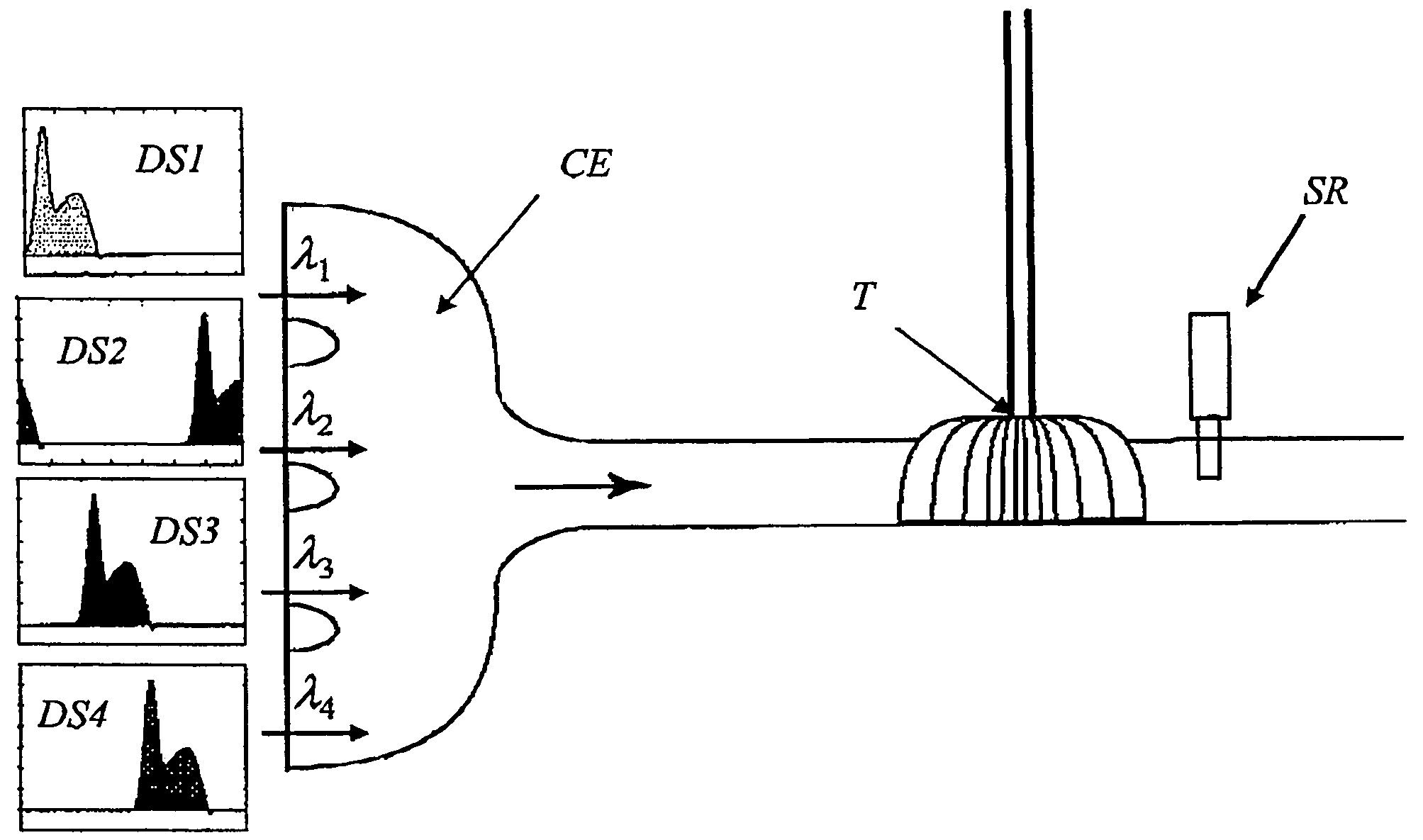Method of estimating the fuel/air ratio in a cylinder of an internal-combustion engine by means of an extended Kalman filter
a technology of internal combustion engine and kalman filter, which is applied in the direction of electrical control, process and machine control, instruments, etc., can solve the problems of no robustness and the loss of efficiency of catalysts using nox traps in the course of time, and achieve the effect of more robustness
- Summary
- Abstract
- Description
- Claims
- Application Information
AI Technical Summary
Benefits of technology
Problems solved by technology
Method used
Image
Examples
Embodiment Construction
Description of the Exhaust Process
[0029]The exhaust process comprises the path traveled by the gases from the exhaust valve to the open air, at the exhaust muffler outlet. The engine in the present embodiment example is a 2200-cm3 4-cylinder engine. It is equipped with a variable-geometry turbo / supercharger. The diagram of FIG. 1 shows the descriptive elements of the exhaust process, wherein:
[0030]λ1 to λ4 are the fuel / air ratios in each one of the four cylinders,
[0031]SR is the fuel / air ratio probe,
[0032]CE corresponds to the exhaust manifold,
[0033]T corresponds to the turbine of the turbo / supercharger,
[0034]DS1 to DS4 represent the flow rates at the cylinder outlets.
[0035]Fuel / air ratio probe (SR) is arranged just after turbine (T). The gases, after combustion in the cylinder, undergo the following actions:
[0036]passage through the exhaust valve. The latter is controlled by a camshaft, with the lift law being bell-shaped. The flow rates will go from a high value, when the valve op...
PUM
 Login to View More
Login to View More Abstract
Description
Claims
Application Information
 Login to View More
Login to View More - R&D
- Intellectual Property
- Life Sciences
- Materials
- Tech Scout
- Unparalleled Data Quality
- Higher Quality Content
- 60% Fewer Hallucinations
Browse by: Latest US Patents, China's latest patents, Technical Efficacy Thesaurus, Application Domain, Technology Topic, Popular Technical Reports.
© 2025 PatSnap. All rights reserved.Legal|Privacy policy|Modern Slavery Act Transparency Statement|Sitemap|About US| Contact US: help@patsnap.com



